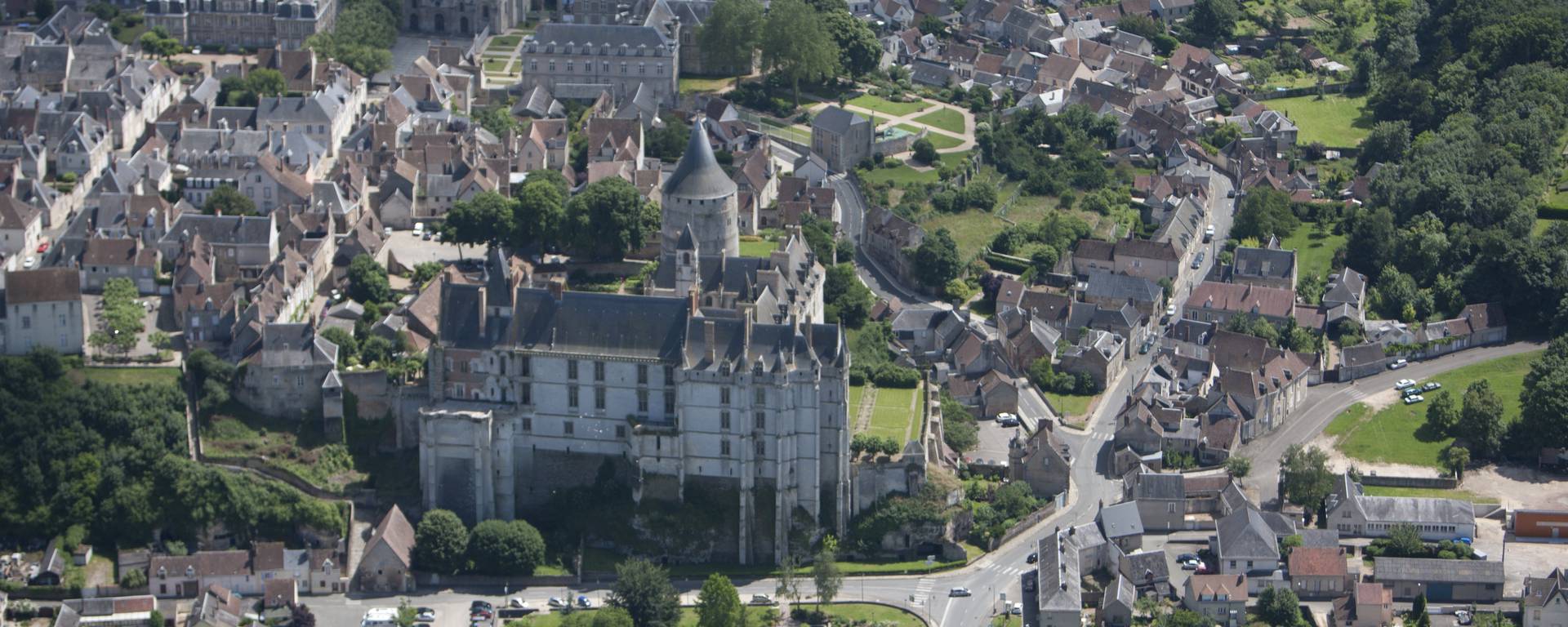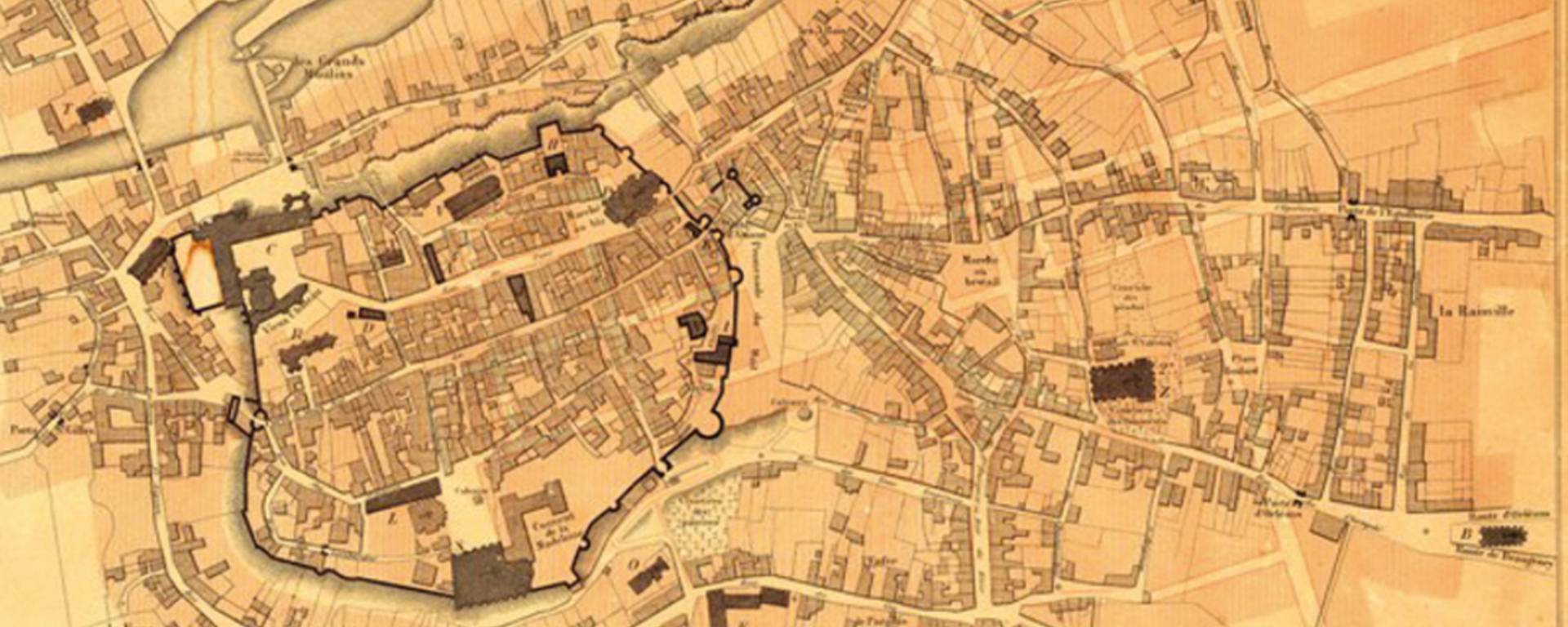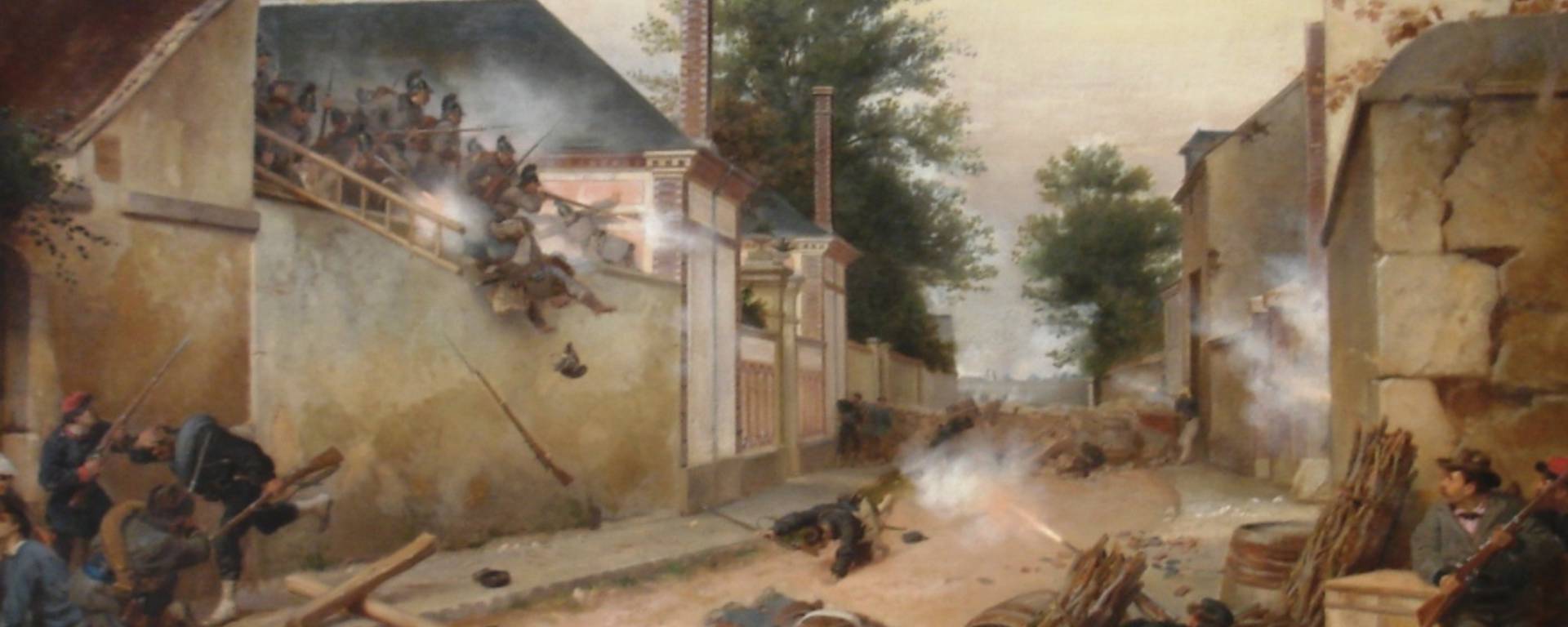A town full of history
A Gallic oppidum on the banks of the Loir
A fortified Gallic town inhabited by the Carnuti overlooked the Loir from the heights of the rocky crag, on the site of the current town. The Celtic word “dun” means a fortified high place and is present in the town’s name.
The fortified town of the Counts of Blois
The first fief count of Châteaudun was Thibaud le Tricheur, first count of Blois and later of Tours, Chartres and Châteaudun, in the mid-tenth century. The town was already defended by a fortified castle made of wood and a wall that got progressively larger through the Middle Ages. Le Dunois remained in the hands of the Counts of Blois for almost 450 years, down to the fifteenth century – the counts delegated local authority onto viscounts.
In the early twelfth century an abbey was founded not far from the counts’ castle, and a charter was granted to the town by the Count of Blois in 1197 allowing Châteaudun certain autonomy. It was also in the late twelfth century when Count Thibault V had the large circular castle keep built. In the late thirteenth century, the town wall reached its greatest extension and the perimeter, which included ten hectares, now protected the abbey of La Madeleine, the Hôtel-Dieu and the collegiate church of Saint André.
A new overlord: Jean de Dunois
Duke Louis d’Orléans acquired the earldoms of Blois and Dunois in the late fourteenth century, together with the vice-earldom of Châteaudun. On his death, his eldest son Charles, well-known for his poetic works, inherited his estates. He granted the earldom of Dunois and the vice-earldom of Châteaudun to his half-brother Jean d'Orléans. Jean was a great captain in the army of King Charles VII, his cousin, and a companion in arms of Joan of Arc. Known as Jean de Dunois, he had the old fortified castle demolished to build the Sainte Chapelle and the wing of the castle that bears his name. His descendants, the dukes of Longueville, added a second perpendicular wing that was finished in the early sixteenth century.
Prosperity in the sixteenth and seventeenth centuries
The town prospered up to the seventeenth century thanks to the textile industry and the production of woollen cloth, serge and covers. Tanneries prospered, and textile craftsmen made great use of the mills along the River Loir. Châteaudun also grew numerous crops and there were plenty of vineyards – another important aspect was the production of cereals.
A new town in the eighteenth century
On 20 June 1723 a terrible fire destroyed most of the high part of the town (the castle, the abbey of La Madeleine, and some streets between the two monuments, including the Rue Saint Lubin, were preserved). The State sent the royal architect Jules Michel Hardouin to design a new plan for the town. The town was rebuilt in the classical style, a sober and refined planning model. The new town was organized around a large new rectangular square which became the heart of the town.
Since the Middle Ages there had always been numerous religious buildings in the town – over twenty churches and chapels for a town of 5,000 or 6,000 inhabitants, although some of these buildings that had survived the fire or been rebuilt were finally destroyed in the Revolution when religious buildings were sold off and for some, mutilated. Of the seven parishes from before the Revolution, only three remained after 1795: La Madeleine, Saint Valérien and Saint Jean.
The battle of 18 October 1870
On 18 October 1870, during the Franco-Prussian War, almost 1,200 irregular soldiers and national guards defended the town against a Prussian division which outnumbered them by ten to one. At the end of a fierce struggle and an inevitable retreat, the town was set on fire and suffered terrible damage. In 1877 the town was awarded the Cross of the Légion d’Honneur for this heroic stand – it proudly forms part of the town’s coat of arms.
Modernization in the nineteenth century
The town underwent significant changes in the late nineteenth century, with a water supply to the upper town, the construction of baths, gas lighting and the coming of the railway in 1865.
The two world wars
The town had numerous hospitals behind the lines in the First World War, and was heavily bombarded in the Second World War, especially in 1940 and 1944. The area around the train station, the air base and the quarter of La Madeleine suffered severe damage. The town was liberated on 17 August 1944 by the American forces with the help of the local resistance.
The town has faced up to numerous challenges but has always managed to rise up again, hence its motto: Extincta Revivisco – “I am reborn from my ashes”.




